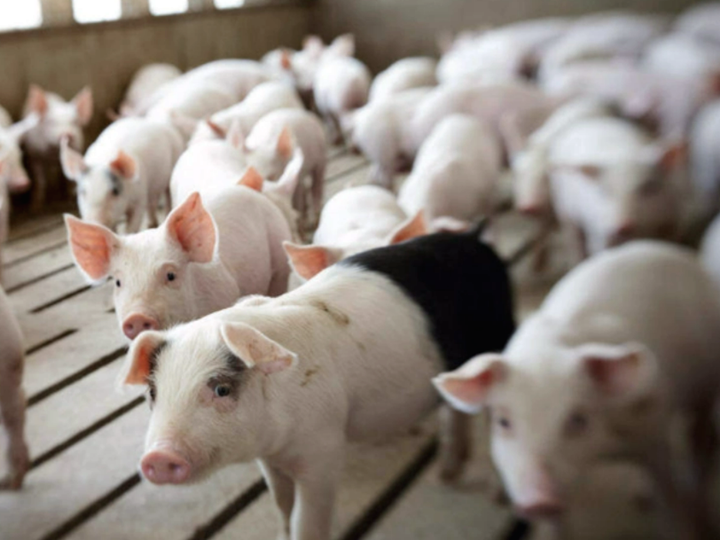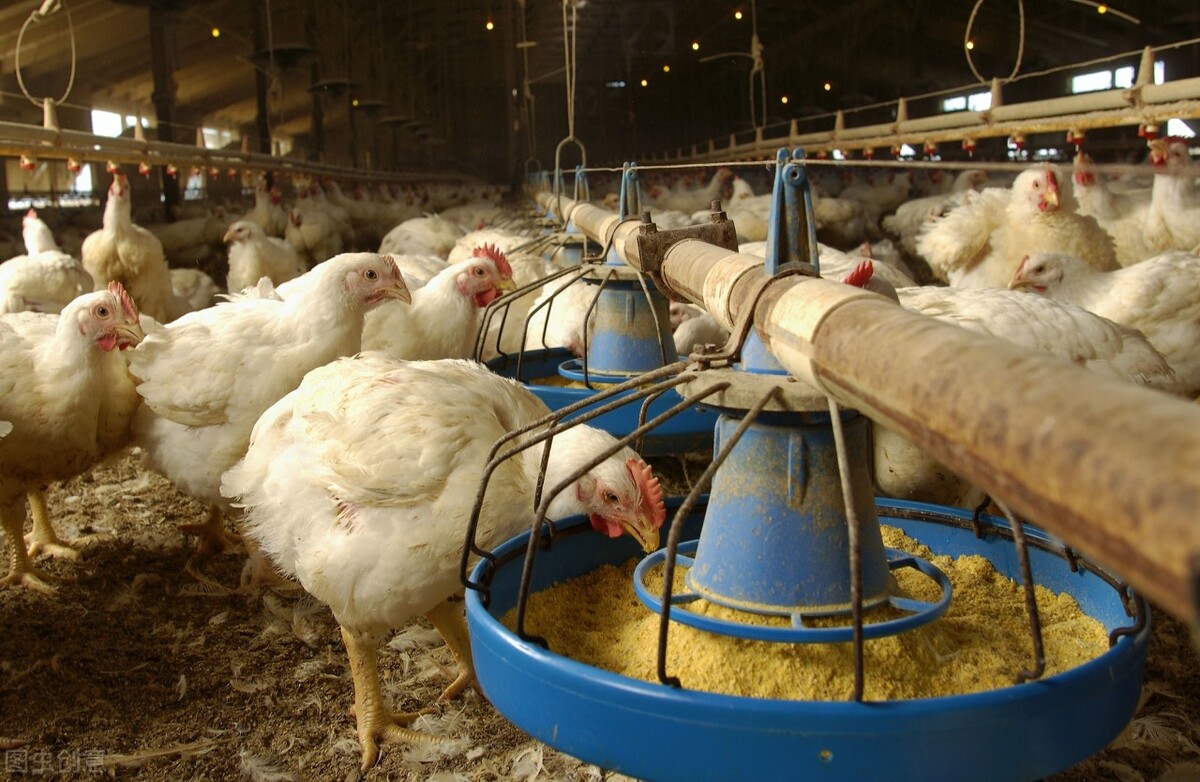How High Ammonia Levels Affect Animal Feeding?
With the large-scale and intensive development of the breeding industry and the improvement of feeding stocking density, the emission of ammonia from livestock and their excrement has been rising. These irritating gases will seriously harm the health of farmed animals and pollute the surrounding environment. Ammonia is a colorless gas that is formed when nitrogen compounds like urine and manure decompose. In animal production facilities like barns and feedlots, ammonia levels can build up from the breakdown of animal waste. High levels of ammonia can negatively impact the health and performance of livestock. In this article, we will discuss the cause, effects, treatment and prevention of the high level of ammonia in animal feeding production, hope this post can help you.
Causes of High Ammonia Levels
There are two main sources of ammonia in the breeding industry: one is from the animal body, mainly gastrointestinal digestion, feces and urine; The other is the ammonia gas in the house environment, which is mainly generated by the decomposition of organic matter such as feed residue and bedding grass. There are several factors that contribute to elevated ammonia levels in animal housing:
Ammonia in animals comes from amino acid catabolism in various tissues of animals. The amino acids are converted into urea or uric acid in the animal’s liver, and they are returned to the gastrointestinal tract to hydrolyze into ammonia. When the glutamine in the blood flows through the kidney, part of it produces ammonium salt, and part of it can be broken down by the glutaminase in the renal tubular epithelial cells to produce ammonia. Diets high in protein can increase ammonia levels from higher nitrogen content in manure. Reduced protein diets may help lower ammonia production.
Accumulated feces and urine, feed residue and other organic matter decomposition of ammonia gas in animal housing. Taking pigs as an example, usually, the ammonia gas in the pig house environment mainly comes from the degradation and decomposition of a large number of feces and urine discharged by livestock and poultry every day; Pig feces and urine contain a lot of nitrogen and phosphorus, in the absence of oxygen, decomposition into NH3, H2S and other harmful gases. The utilization rate of feed nitrogen intake by pigs is only 60% to 70%, that is, about 30% to 40% of nitrogen will be excreted through pig feces and urine. The content of ammonia in the livestock house depends on the temperature in the house, feed density, ventilation, ventilation, ground structure, cleanliness of the house etc:
- High stocking density – More animals in a confined space means more waste products and higher ammonia production. Overcrowding is a major cause of poor air quality.
- Poor ventilation – Without adequate air exchange, ammonia can accumulate in a barn. Proper ventilation helps remove gases and bring in fresh air.
- Warm temperatures – Ammonia production increases at higher temperatures. Heat accelerates the breakdown of nitrogen compounds.
- Dirty surfaces – Ammonia attaches to dust particles and surfaces like walls and floors. Regular cleaning helps control buildup.
Dangers of High Ammonia Levels
Ammonia is a recognized stressor, prolonged exposure to high ammonia levels negatively affects the health and productivity of animals. The harm of ammonia in vitro, such as the damage to animal respiratory tract and mucous membrane, is often concerned by people. In fact, the harm of ammonia in vivo is more serious. Ammonia in the body can lead to poor animal resistance, intestinal stimulation and damage, affect blood oxygen concentration, increase the burden of liver and kidney, and affect reproduction links such as estrus pregnancy and childbirth. High ammonia levels can be dangerous for livestock and poultry in several ways:
- Respiratory issues
- Eye irritation
- Reduced growth rates
- Increased susceptibility to disease
- Reduced egg production
- Behavioral changes
It is worth noting that different animals have different degrees of tolerance to ammonia, and in general, the tolerance from high to low is: ruminants, pigs, and broilers. According to research reports, an annual pig farm, the average daily nitrogen emissions of 105kg, a large part of which in the form of ammonia (NH₃) released into the atmosphere. Too high ammonia in the house will not only affect the growth and development of pigs, but also reduce the body’s resistance, thus inducing a variety of diseases, when the concentration of ammonia in the pig house reached 65mg/kg, pigs began to appear respiratory diseases; When the ammonia concentration reached 75mg/kg, pigs began to develop atrophic rhinitis, and the incidence increased sharply with the increase of ammonia concentration.
Broilers, for example, are exposed to 20mg/kg of ammonia for a long time, showing tears, anorexia and slow weight gain. When the concentration increases to 50mg/kg, it presents with laceration, photophobia, corneal degeneration, chest balloon inflammation, and severe coccidiosis. With the increase of ammonia concentration, the mortality rate of broiler chickens will also increase. Therefore, how to reduce ammonia emissions has become the key to the profitability of aquaculture. Other hazards of ammonia may include:
Reduced feed intake and daily weight gain. Ammonia in the intestine stimulates the intestinal mucosa, leading to intestinal mucosal damage and shedding, affecting the integrity of the intestine and destroying the immune barrier function of the intestine, which is usually manifested as slow growth and increased intestinal diseases. Increased susceptibility to respiratory diseases. Ammonia is irritating to the respiratory tract, eyes, and skin of both animals and their caretakers.
Lower egg production and egg quality in poultry. Blood ammonia degradation needs to consume a lot of energy and glutamic acid, arginine and other amino acids, resulting in nutritional waste, and lead to reduced energy supply to brain cells, manifested as restlessness, appetite loss or anorexia, mental malaise and other symptoms.
Treatment and Prevention of High Ammonia Levels
Monitoring ammonia levels and making adjustments to housing and management practices can help control ammonia buildup and its harmful effects on livestock productivity. Proper ammonia control takes an integrated approach including ventilation, sanitation, stocking rates, and diet formulation. These steps can be taken to prevent excessive ammonia accumulation and protect animal health:
- Some intestinal regulation additives can be used in the diet to reduce the abnormal fermentation of ammonia such as undigested amino acid and protein content, or yucca extract can be added to the diet or sprayed in the house dilute acidic solution such as acetic acid or liquid yucca extract, through neutralization or adsorption methods to reduce the ammonia concentration in the house.
- Improve ventilation to increase air exchange.
- Use ammonia binding products like zeolites in bedding
- Regularly remove waste products from housing
- Clean and disinfect surfaces
- Alter diets to reduce nitrogen content when possible Avoid overcrowding animals





